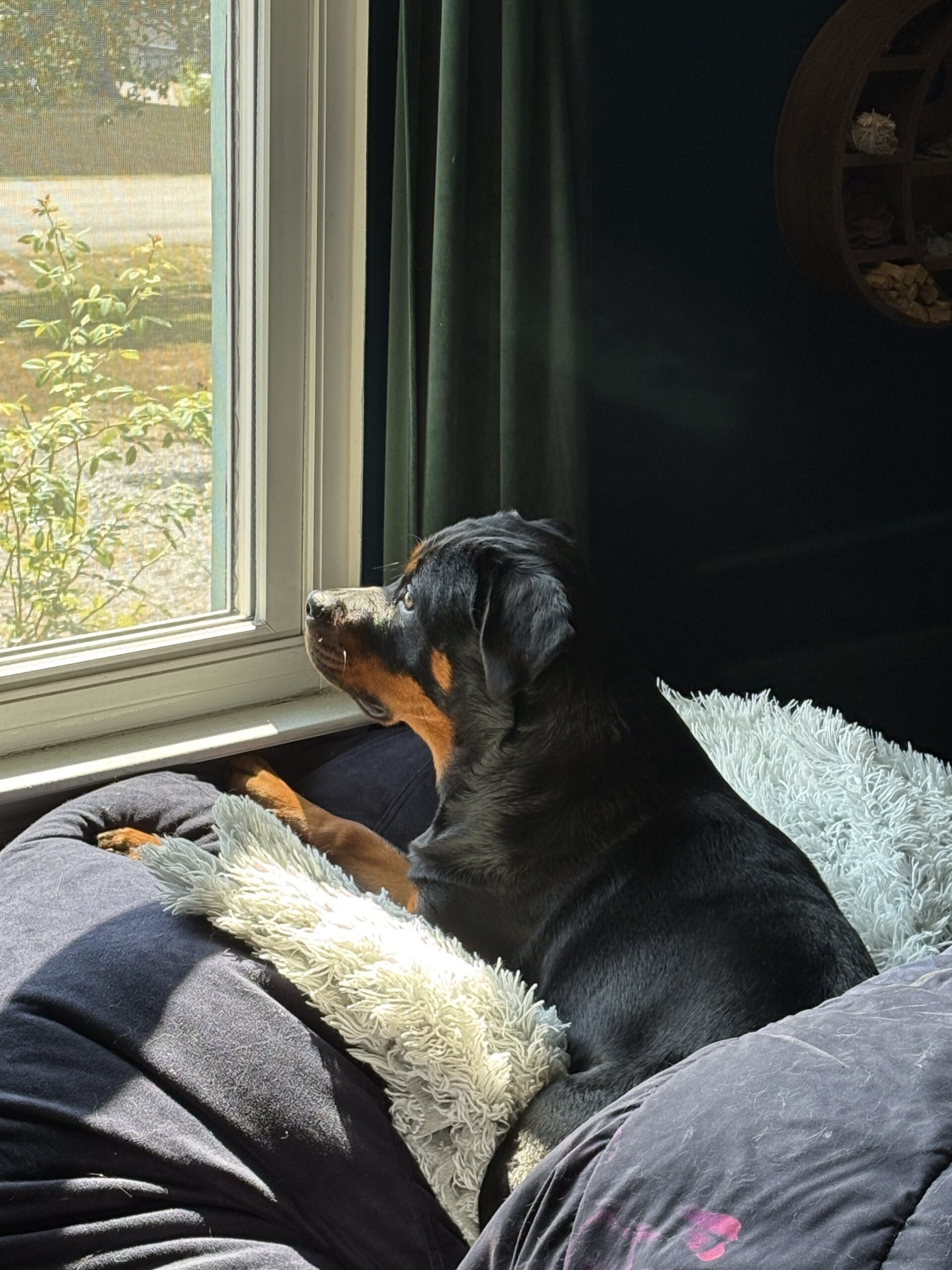When it comes to dog training, one of the most important shifts you can make as an owner is moving from being reactive to being proactive. Too often, owners find themselves constantly correcting behaviors after they’ve already happened—pulling the dog away, scolding, or scrambling for control. This reactive cycle doesn’t just frustrate you; it also confuses your dog and reinforces stress.
A proactive approach, on the other hand, gives your dog clarity and structure before problems arise. Instead of waiting for things to go wrong, you anticipate challenges and guide your dog through them in ways that build confidence and trust.
What Does Reactive Look Like?
Reactive handling usually starts when something in the environment triggers the dog. Maybe another dog approaches, a squirrel dashes across the yard, or the doorbell rings. Your dog lunges, barks, or bolts forward. You react—tightening the leash, raising your voice, or repeating cues in an attempt to regain control.
In this moment, both you and your dog are reactive. Neither of you is calm, grounded, or thinking clearly. This cycle not only feels overwhelming, it often makes the dog’s behavior worse over time because it reinforces their sense that the world is unpredictable and stressful.
What Does Proactive Look Like?
Being proactive means anticipating situations and setting your dog up for success. Before the trigger happens, you already have a plan.
Examples include:
- Redirecting your dog’s focus before another dog passes.
- Asking for a “stay” before opening the door so they don’t bolt.
- Practicing calm behavior around distractions in low-stress environments before facing real-world challenges.
- Using enrichment and exercise to reduce pent-up energy that often fuels reactivity.
Instead of being caught off guard, you’re leading your dog through situations with intention and calm authority.
Why Proactive Matters
When you’re proactive, you’re giving your dog the structure they crave. You’re showing them: I’ve got this covered, you can relax. This builds trust and reduces the need for them to take matters into their own paws.
Proactive training also:
- Lowers stress for both dog and owner.
- Prevents bad habits from forming.
- Builds resilience and confidence in your dog.
- Strengthens the bond through clear communication.
How to Shift from Reactive to Proactive
- Know your dog’s triggers. Pay attention to what sets them off so you can plan ahead.
- Train for real life. Practice behaviors like “scatter “let’s go,” or “check-in,” in controlled settings so they’re reliable when needed.
- Stay calm. Your dog feeds off your energy. Ground yourself before addressing them.
- Set up success. Create situations where your dog can win—gradual exposure, safe distance, and consistent rewards.
- Think ahead. Don’t wait for chaos. Anticipate what’s coming next and give your dog direction early.
Final Thoughts
Dogs thrive when their world feels safe, structured, and predictable. By being proactive instead of reactive, you help create that sense of security. It’s not about perfection or controlling every situation, it’s about leading with intention so your dog learns to trust you and feel at ease in the world around them.
When you shift your mindset, you’ll find your dog isn’t the only one who benefits. Life becomes calmer, more enjoyable, and more connected—for both ends of the leash.
